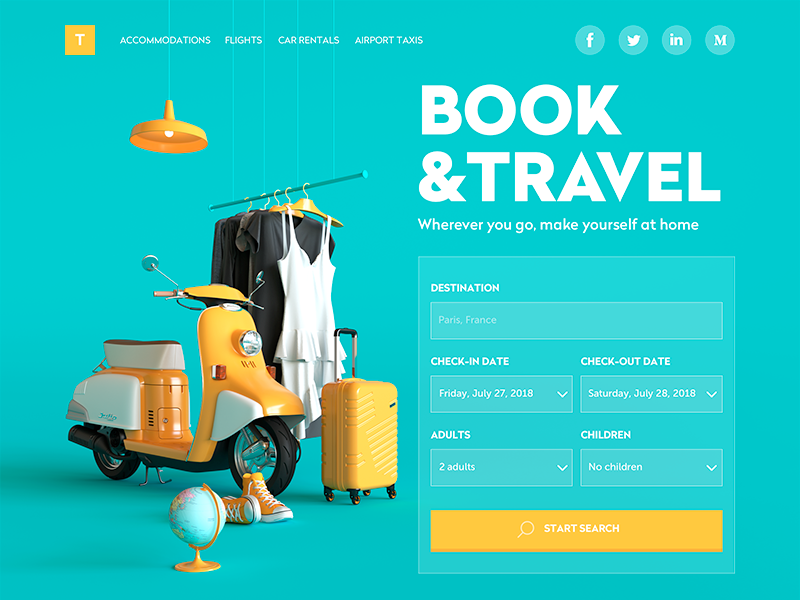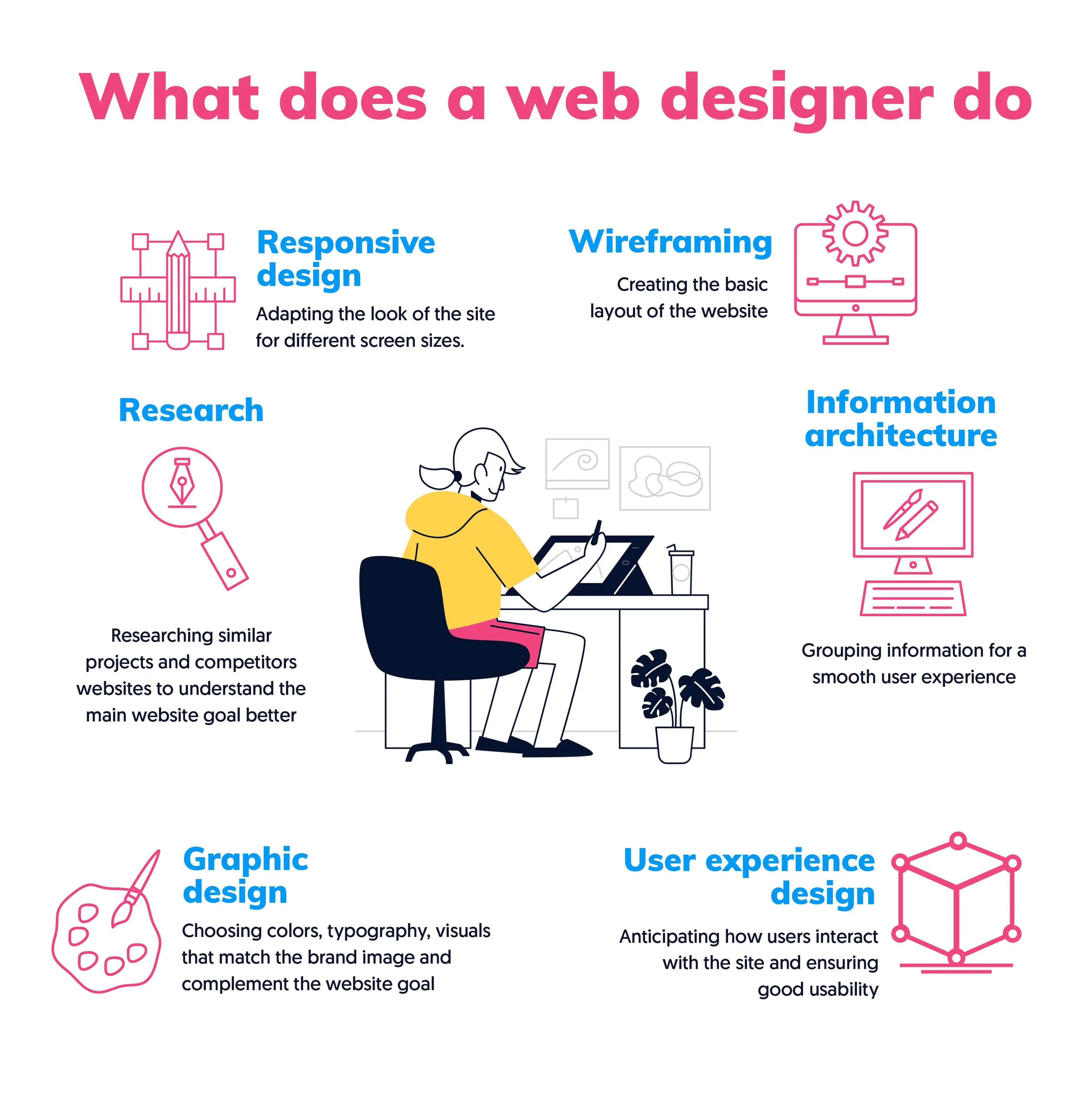The Very Best Kinds of Web Design to Boost User Experience and Interaction
In the ever-evolving landscape of digital interaction, the efficiency of website design substantially affects user experience and interaction. Different layout approaches, such as minimalist, receptive, and interactive layouts, each deal one-of-a-kind advantages that can satisfy diverse customer demands. Understanding which kinds of Web layout ideal serve these objectives can be critical for organizations intending to improve client contentment and retention. The inquiry continues to be: which design aspects absolutely reverberate with users and foster purposeful interaction? The expedition of these concepts exposes vital understandings that might redefine your technique to website design.
Minimalist Web Layout
As electronic landscapes come to be significantly messy, minimalist Web style has actually become an effective strategy to boosting user experience. This design viewpoint prioritizes simpleness, concentrating on necessary aspects while eliminating unnecessary disturbances. By utilizing enough white area, simple navigation, and a restricted shade scheme, minimal design cultivates quality and routes customer focus to essential material.
The core principle of minimalist website design is to produce a smooth communication for individuals. By decreasing cognitive lots, customers can promptly grasp information without really feeling bewildered. This direct approach not just enhances usability but additionally urges engagement, as site visitors are more probable to explore a website that is aesthetically attractive and simple to browse.
Additionally, minimal design typically stresses typography and imagery, utilizing these elements strategically to share messages efficiently. This focus on crucial elements can improve brand name identity and develop an unforgettable user experience. Fundamentally, minimalist Web style is not simply a trend; it is a thoughtful technique that acknowledges the relevance of user-centered design. By removing peripheral aspects, developers can create a much more interesting, efficient, and delightful Web experience for all individuals.
Responsive Web Style
In today's varied digital atmosphere, receptive website design has come to be important for producing a seamless individual experience throughout a plethora of tools. As individuals accessibility websites on mobile phones, laptop computers, desktop computers, and tablet computers, the capacity of an internet site to adjust its format and material to various display dimensions and resolutions is critical.
Receptive Web design utilizes versatile grids, pictures, and CSS media inquiries to guarantee that Web material exists ideally, no matter of the tool utilized. This technique not only boosts the aesthetic allure of a web site however likewise substantially improves usability. Customers are more probable to engage with a website that provides a constant experience, as it eliminates the disappointment of having to focus or scroll exceedingly.
By taking on responsive layout, companies can improve their presence and reach a broader audience. In recap, responsive Web layout is an essential technique that enhances user experience, engagement, and general satisfaction.
Interactive Web Design
Responsive Web layout lays the groundwork for boosting user experience, however interactive Web design takes this a step better by engaging individuals in an extra vibrant way - Aligned Position Web Design. By integrating elements such as animations, clickable models, and real-time responses, interactive Web design mesmerizes customers, attracting them into a richer surfing experience
This technique not only fosters interaction but also urges individuals to discover material proactively rather than passively consuming it. Methods such as gamification, where users make incentives for finishing jobs, can substantially boost the moment invested in a site and improve general satisfaction. Interactive features can simplify intricate information, making it more digestible and pleasurable.

Integrating interactive layout aspects can additionally result in greater conversion rates, as users are more probable to engage with a website that actively includes them. Aligned Position Web Design. Eventually, interactive Web layout transforms individual experiences right into memorable trips, making sure that visitors return time after time
Apartment Design
Characterized by its minimalistic approach, flat style highlights simpleness and capability, removing unnecessary components and concentrating on essential functions. This layout viewpoint focuses on usability, ensuring that users can navigate interfaces effortlessly and effectiveness. By employing a tidy aesthetic, level style eliminates the mess typically discovered in more elaborate designs, thus boosting individual focus on material and performance.
The hallmark of flat design lies in its usage of bold shades, basic typography, and geometric forms. These aspects add to a visually attractive interface that is both approachable and modern-day. In addition, level design promotes a feeling of clearness, enabling users to determine crucial actions and details without interruption.
Furthermore, level layout is specifically efficient in receptive Web style, as its simpleness converts well throughout different gadgets and screen dimensions. By focusing on crucial attributes, level design not just satisfies customer Continue needs however likewise motivates seamless communication, making it a crucial component of efficient Web layout strategies.
Flexible Web Design
Flexible website design customizes the customer experience by developing numerous taken care of formats customized to various screen dimensions and tools. Unlike receptive layout, which fluidly changes a solitary format, flexible style utilizes distinct formats for specific breakpoints, ensuring optimal discussion on different systems. This method permits designers to concentrate on the distinct qualities of each tool, enhancing usability by supplying specifically what users require based upon their context.
Among the key benefits of flexible Web visit the site design is its capacity to optimize tons times and efficiency. By offering tailored content and images that fit the individual's gadget, web sites can lessen data use and enhance loading speeds. This is particularly helpful for users with slower connections or minimal information strategies.

In addition, flexible design promotes a more regulated and regular branding experience. Considering that designers create multiple designs, they can make certain that the visual aspects straighten with the brand name's identity throughout various platforms - Aligned Position Web Design. This causes a natural user experience, improving interaction and advertising individual retention
Conclusion
Minimal design promotes clearness and focus, while receptive layout ensures adaptability across numerous gadgets, promoting availability. Collectively, these layout approaches add to the creation of easy to use atmospheres that not just enhance contentment however additionally drive higher conversion prices, highlighting their important importance in contemporary Web style techniques.

Minimalist design promotes clearness and emphasis, while receptive style makes sure adaptability across different gadgets, advertising accessibility. Collectively, these design comes close to contribute to the development of straightforward settings that not just boost fulfillment yet additionally drive greater conversion prices, emphasizing their crucial value in modern Web design techniques.